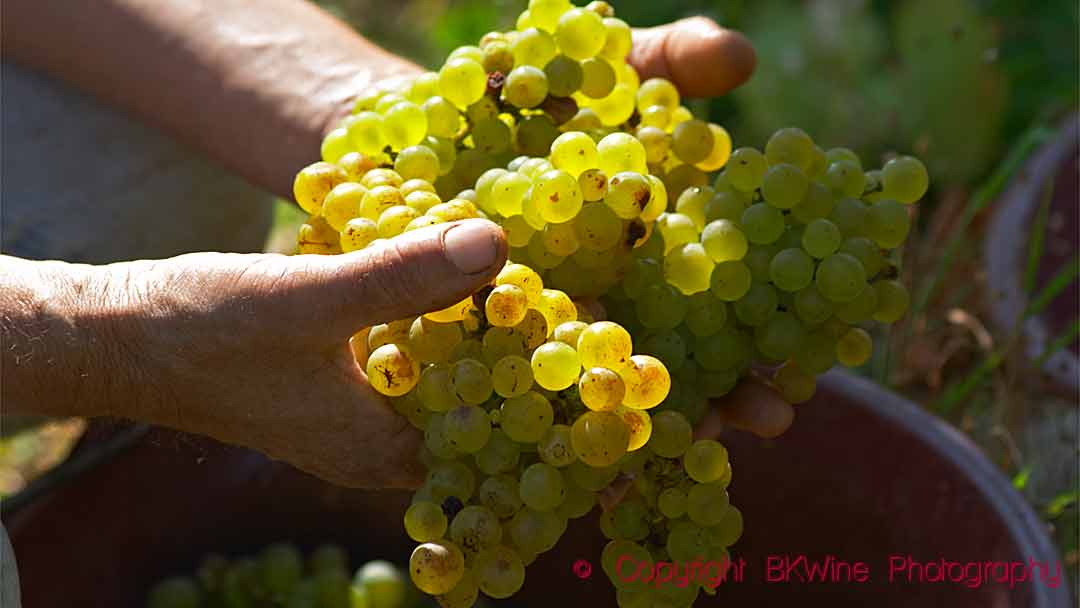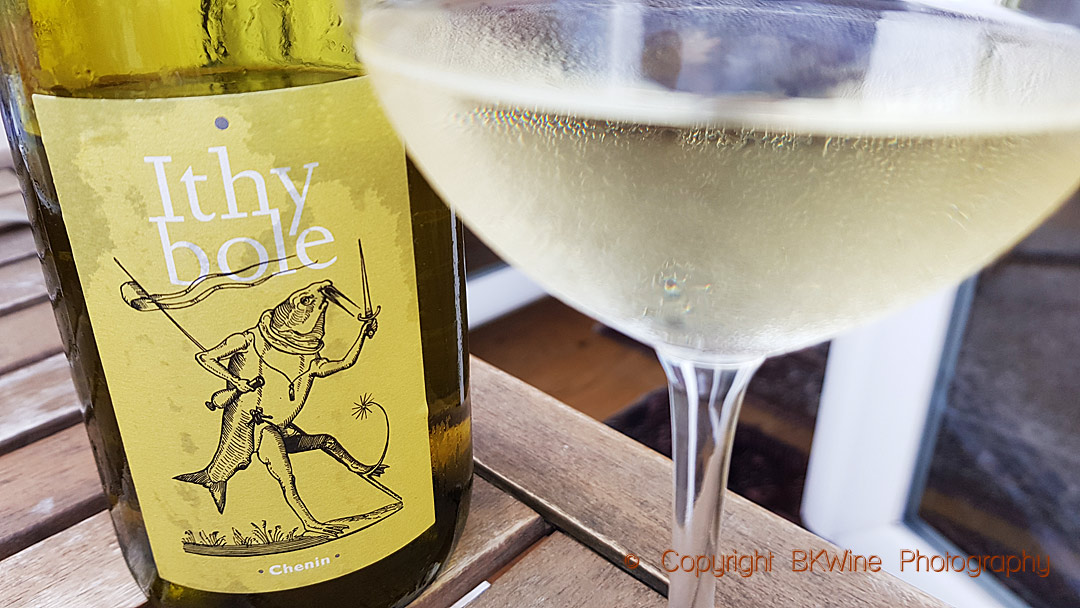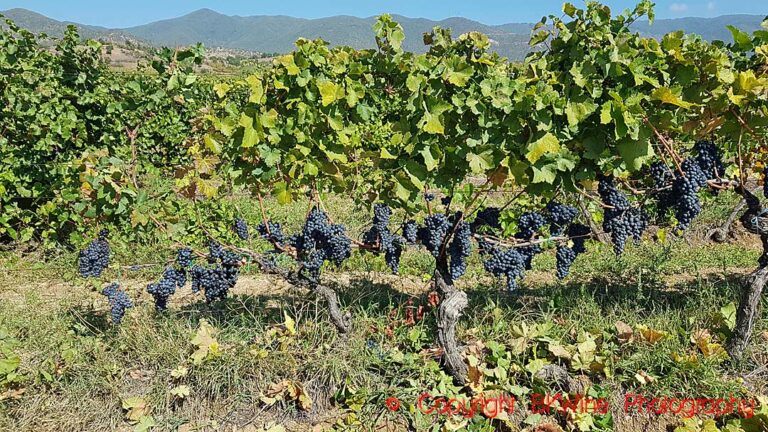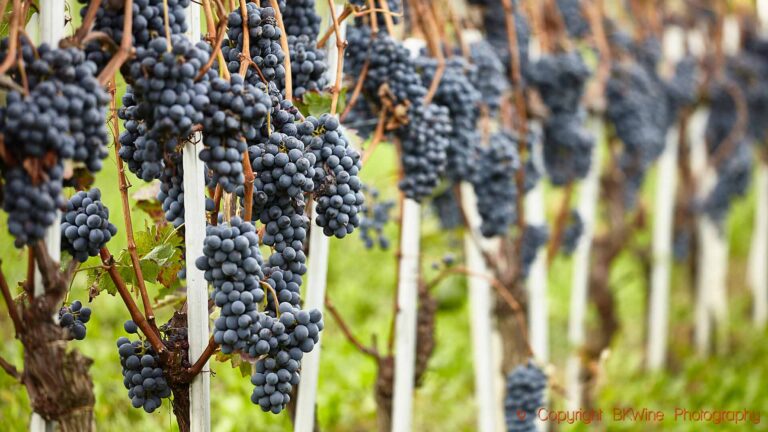Chenin blanc is one of the world’s top white grape varieties. Yet, sometimes chenin wine producers in Vouvray are frustrated. Selling a chenin blanc is not as easy as selling a sauvignon blanc, they say. Sauvignon blanc is more famous, more easy-drinking, easier to understand. A chenin blanc is more complex and amazingly versatile. You can make bone dry, crispy wines out of it but also lusciously sweet ones. And everything in between. It only depends on when you pick the grapes. Well, almost only. Read on and you will learn all essentials you need to know about this great grape variety.
In this article:
- Chenin blancs charcateristics
- Chenin blanc in France
- Chenin blanc in South Africa
- In the rest of the world
- Quick facts on chenin blanc
I love chenin blanc’s high acidity. The fresh acidity is combined with a particular mouth-filling sensation, making things even better. But even if it is mouth-filling it almost always has a very light structure and elegance. It is a grape that rarely disappoints. It gives wines with aromas of grapefruit, white flowers, honey and sometimes beeswax and almonds.
Properly treated, it produces outstanding wines, intense and long-lasting wines with a unique character. In the Loire Valley we find such wines in Vouvray, Savennières, Bonnezeaux, Quarts de Chaume and Coteaux de Layon, among others.
Chenin blanc is grown mainly in France and South Africa. In France, it is most important in the central Loire Valley, but it also thrives in the cool climate of Limoux in southern Languedoc. In the Loire Valley, the producers use it for dry, sweet and sparkling wines. It all depends on when you harvest the grapes. In Limoux, it produces sparkling and still dry wines.
This is a longer version of an article published on Forbes.com.
This is an article in our series of presentations of the world’s most popular and exciting grape varieties. Read other articles here:
The grape probably comes from the Anjou area in the Loire Valley. In the 16th century, Rabelais, the poet from Touraine, wrote in his book Gargantua about a grape that was probably chenin blanc.
It buds early and can be affected by spring frost. It has a good resistance against downy mildew but less so against powdery mildew. The grape can give large harvests in certain types of soils, which is one reason why it became popular as a brandy grape in South Africa.
Chenin blanc in France
Vouvray is the most famous chenin appellation in France. Vouvray is in Touraine, just east of the city of Tours. The surface is just over 2000 hectares. Opposite, on the other side of the river Loire, you can find the AOP Montlouis-sur-Loire with 400 hectares and similar wines.
A dry (“sec”) Vouvray can be crispy and very dry. But some producers prefer their dry Vouvray with a bit of sweetness. Because of the very high acidity, they think that chenin needs some residual sugar, perhaps 6-8 grams per litre. The wine, they say, will still be perceived as dry. Much like many champagnes that can have 8-10 g (even up to 12g, the limit for “brut”) of sugar per litre, and people will still consider them dry because of the high acidity.
A producer in Vouvray often makes several different wines from his chenin blanc grapes. The range can vary from year to year, depending on the weather. Some years his Vouvray can be both sparkling, dry (still), semi-dry and sweet. For the sparkling ones, the grapes are picked early, with low sugar content and exceptionally high acidity. They often print on the label what style the wine is: sec, demi-sec and moëlleux, respectively.
Savennières is located west of the city of Angers. The grape is 100% chenin, as in Vouvray, but the soil is schist instead of limestone that they have in Vouvray. Savennières is a small appellation, only around 150 hectares and about 40 producers. Here the wines are almost always dry.
They have exceptional ageing potential. A 20-year-old Savennières is incredibly lively, with a high acidity that is combined with the complexity and fullness of the grape. Despite its small size, Savennières has two sub-appellations: Savennières-Roche-aux-Moines, which is shared by three producers, and Savennières-Coulée de Serrant, a monopoly vineyard run by biodynamic Nicolas Joly and his daughter Virginie.
Chenin blanc has found a second home in France in the southern parts of the Languedoc. Yes, it is generally a warmer climate here, which may feel contradictory to its northern origine. But it thrives inland, close to the famous medieval city of Carcassonne. Winters can be very cold here and summers are not so scorching as closer to the Mediterranean.
Here, the chenin can be used in the Limoux appellation for wines that are generally fuller-bodied than its Loire cousins. You can also find it in IGP wines and vin de france as well as in some original blends.
Not so well-known
Chenin blanc has long lived a somewhat “hidden” existence and has not achieved the same popularity as the other great white grape in the Loire Valley, sauvignon blanc. Chenin blanc is perhaps more demanding, and it does not get the same attention in a wine shop as a sauvignon blanc.
Chenin blanc in South Africa
Chenin blanc has long been South Africa’s most grown grape. It is still the most planted grape with 18,600 ha, 18% of the acreage. But it has decreased significantly in 20 years. Traditionally, producers have seen chenin as high-yielding and simple. The trend shows a continued decline. But now more and more people are beginning to discover the qualities of the grape and realise that it can also make great wines in South Africa.
As mentioned above, it used to be grown mainly for distillation into brandy (that can be excellent in South Africa). Now producers use it both for everyday wines and for exciting quality wines, with more restrictive yields. The grape used to be called steen, and it happens that you still see that name used. But most people today prefer to call it chenin blanc to distance themselves from the mediocre wines of old. Many chenin blanc from South Africa today are fantastic wines.
Elsewhere in the world
Argentina and the United States have around 2,000 hectares each. There are small areas in many other countries. More and more producers in the world are tempted to have a go at making chenin blanc.
We hope there will be even more. It is one of the wine world’s most extraordinarily high-quality white grape varieties.
Facts on chenin blanc:
Acreage worldwide:
- 32,200 hectares
Main countries where chenin blanc is grown:
- South Africa 19,000 ha
- France 9,200 ha
- Argentina 2,000 ha
- USA 1,900 ha
Chenin blanc’s character:
- Refreshing and high acidity, aromas of grapefruit, white flowers, honey and sometimes beeswax and almonds. Can make outstanding wines, intense and long-lasting wines.
Travel
You can taste some world-class chenin blancs in South Africa, and the best way to do that is to come on one of BKWine’s wine tours to South Africa.
Travel to the world’s wine regions with the wine experts and the wine travel specialist.
World-class wine tours. BKWine wine tours.
















